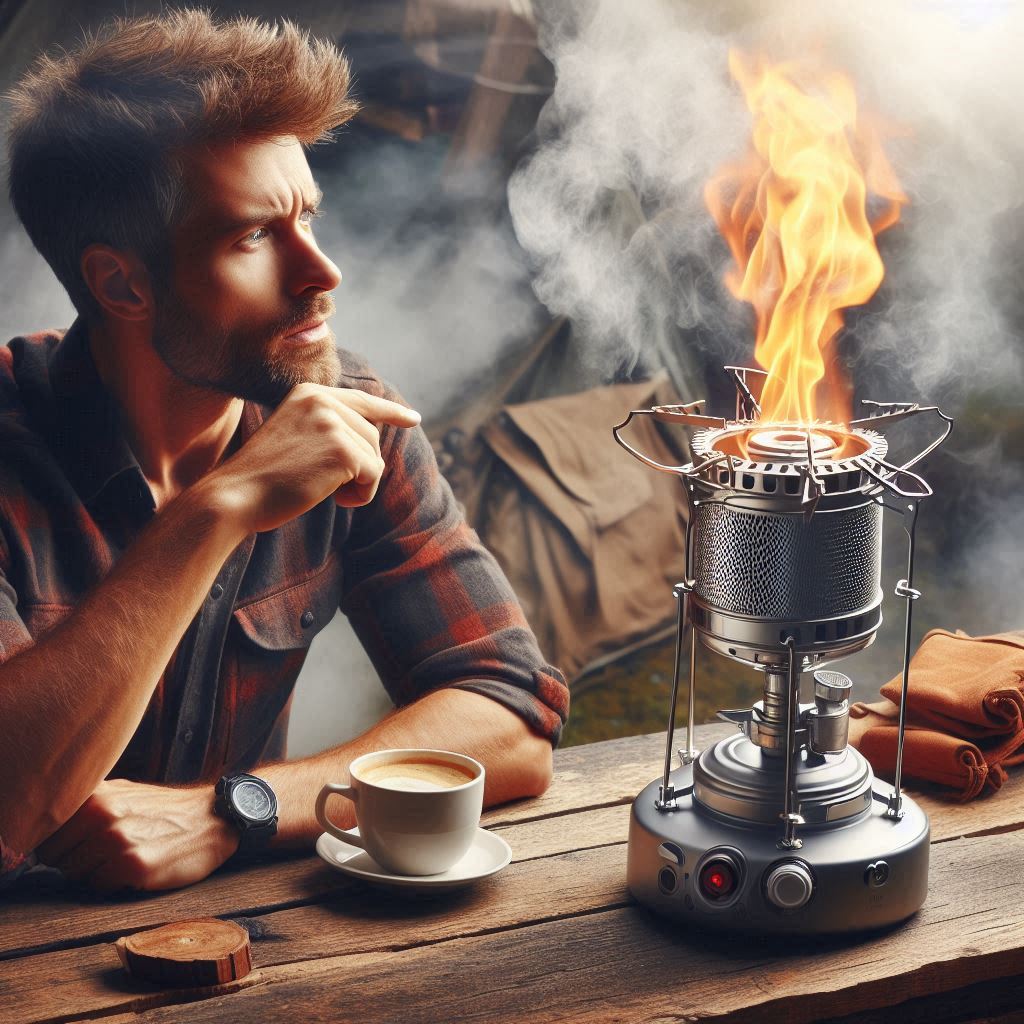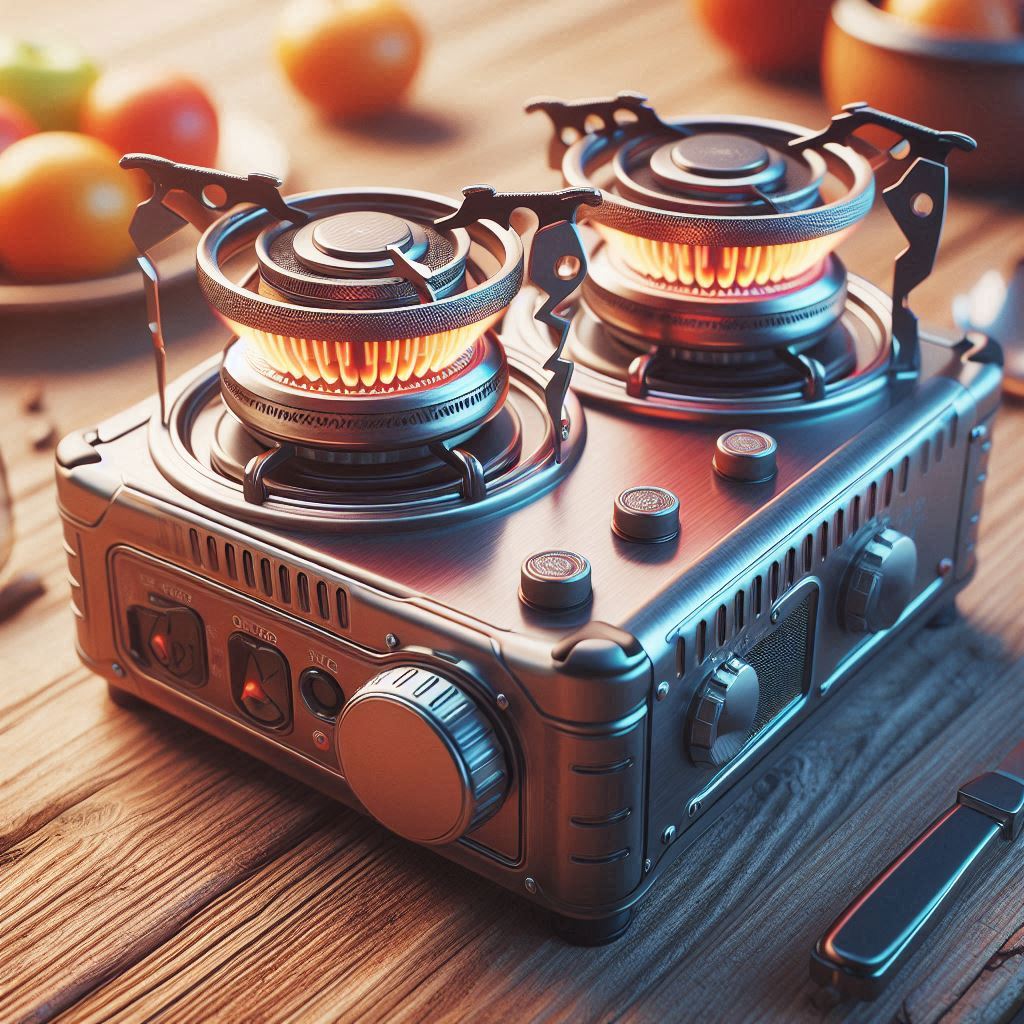In the world of portable cooking solutions, butane stoves often stand out for their convenience and compact design. However, you might find yourself wondering: Are portable butane stoves dangerous? This question is not just about curiosity but also about ensuring the safety of yourself and those around you. Whether you’re a seasoned camper or a casual backyard chef, understanding the risks and safety precautions is crucial.
“Thinking safety first can turn a potential hazard into a manageable camping tool.”
Throughout this article, we’ll delve into the working mechanisms of these handy devices, examine the potential dangers, and provide essential safety tips to help you use your portable butane stove confidently. Let’s embark on this journey to uncover the truth about the safety of portable butane stoves.
How Portable Butane Stoves Work

Butane is a highly combustible hydrocarbon that’s both colorless and odorless. As a fuel source, it is stored in pressurized canisters, making transportation and usage relatively straightforward. When you activate your portable butane stove, butane gas is released through a control valve and mixed with air to create a clean-burning flame. This is ideal for cooking when you’re camping or dealing with a power outage at home.
Looking at the structure of a portable butane stove, you’ll notice a few key components. The canister compartment holds the butane fuel, while the burner head is where the combustion occurs. Many models feature a piezo ignition system, allowing for spark-free lighting with just the press of a button. There’s also a control knob to adjust the flame intensity, giving you the flexibility to simmer or boil as needed.
Modern portable butane stoves come equipped with various safety mechanisms to prevent accidents. Automatic shut-off systems are one such feature; they detect irregularities like excessive pressure or fuel leaks and stop the gas flow immediately. Pressure regulation is another critical component, ensuring that the butane is released at a consistent rate to avoid sudden bursts that could lead to explosions.
Additional safety elements may include windshields to protect the flame when used outdoors, ensuring steady heat output. Some stoves even have a built-in gas-leak detection system, alerting you to any potential hazards. These features collectively aim to make your cooking experience both safe and enjoyable.
Potential Dangers of Portable Butane Stoves
Proper usage and adherence to safety guidelines are paramount when operating portable butane stoves to avoid these potential dangers. For instance, always ensure you’re using the stove in a well-ventilated area to mitigate the risks of carbon monoxide poisoning. Symptoms of carbon monoxide poisoning can include headaches, dizziness, nausea, and in severe cases, it can result in unconsciousness or even death. Adequate ventilation is crucial to prevent these hazards.
Fire hazards and the risk of accidental ignition are significant concerns, often stemming from design flaws or improper handling. It’s essential to follow the manufacturer’s instructions carefully. Avoid overfilling canisters and ensure they are stored correctly. Improper storage or a malfunctioning stove can lead to sudden pressure releases or explosions, posing serious risks.
Explosions are incredibly dangerous, and common causes include using overfilled canisters, storing them improperly, or encountering defective equipment. Several case studies highlight the importance of vigilance: there have been incidents where stoves malfunctioned or were knocked over, leading to severe injuries and even fatalities. Always check your stove for rust, breaks, or any signs of wear before use.
Burns and other injuries are also common with butane stoves. Handling hot surfaces and fuel canisters necessitates caution. One frequent accident is users accidentally touching hot parts of the stove or mishandling the fuel canisters. Wearing protective gear and keeping a safe distance can help mitigate these risks. Also, ensure the stove is placed on a stable, non-flammable surface to avoid it being knocked over.
To ensure safety while using a portable butane stove, remember these key points:
- Always use the stove in a well-ventilated area to avoid carbon monoxide buildup.
- Follow all manufacturer guidelines closely, especially concerning fuel canister usage and storage.
- Before each use, inspect the stove for any signs of damage, such as rust or breaks in the burner.
- Handle the stove and fuel canisters with care, ensuring you don’t touch hot surfaces or allow the stove to be knocked over.
| Risk Factor | Potential Consequence | Prevention Tips |
|---|---|---|
| Carbon Monoxide Buildup | Poisoning or death | Use stove in a well-ventilated area |
| Incorrect Fuel Canister Usage | Explosions or leaks | Follow manufacturer guidelines |
| Rust or Breaks in Burner | Malfunction or fire | Inspect stove before each use |
| Inadequate Handling of Stove | Burn injuries or tipping hazard | Handle with care, avoid touching hot surfaces |
Safety Precautions for Using Portable Butane Stoves
When it comes to safety precautions, it is paramount to touch upon the proper handling and transportation of butane canisters. Always store these canisters in a cool, dry place away from direct sunlight and high temperatures. High heat can cause the canisters to rupture, leading to potential fire hazards. In addition, never store canisters in your vehicle for extended periods, particularly in hot weather. If you need to transport them, do so in an upright position to avoid any leaks or spills.
Ventilation cannot be stressed enough. When using your portable butane stove, make sure you’re outdoors or in a space that is well-ventilated. Cooking in enclosed areas like inside a tent, vehicle, or home can lead to dangerous levels of carbon monoxide build-up. This invisible, odorless gas can be deadly, so always opt for an open-air environment to minimize risks.
Regular maintenance is another crucial factor. Inspect your stove and its components frequently. Look for any signs of wear and tear, such as cracks in the hose connections or rust on the burner. If you notice any damage, replace the parts immediately. Many mishaps with portable stoves occur because of neglected maintenance, leading to leaks and potential explosions.
By adhering to these safety guidelines, you not only prolong the lifespan of your portable butane stove but also ensure a safer cooking experience. Proper usage, thorough checking, good ventilation, and regular maintenance are the keys to minimizing risks and maximizing the benefits of your portable cooking adventures.
Comparing Butane Stoves to Other Portable Cooking Options

When it comes to portable cooking options, you have several choices: butane, propane, electric, and wood. Each of these has its unique benefits and drawbacks, making some more suitable for particular situations than others.
Butane Stoves are favored for their ease of use and high heat output. They’re particularly useful during short-term power outages or camping trips. However, storage safety and ventilation are vital to avoid any potential dangers like gas leakage or carbon monoxide buildup.
Propane Stoves, in comparison, are another popular choice for outdoor cooking. They generally offer a more stable flame and longer burn time than butane stoves. Propane is often less expensive and more widely available, making it a practical option for extended trips. Yet, like butane, propane stoves require proper ventilation and precautionary measures to prevent leaks and explosions.
On the other hand, electric stoves are the go-to option for those who have access to electricity. They are extremely straightforward to use; just plug them in, and you’re ready to cook. The downside is their dependence on power sources, which makes them unsuitable for wilderness adventures or during power outages unless you have a reliable generator.
Wood-burning stoves present an entirely different experience. Favored by survivalists and camping purists, these stoves use readily available natural fuels like sticks and leaves. They provide a cozy atmosphere and an earthy flavor to your food. However, they’re more labor-intensive due to the need for tending the fire and controlling the heat manually. Additionally, they are less predictable and can be less safe without practice, posing risks of uncontrolled fires.
Choosing the Right Stove essentially boils down to your specific needs. If you’re preparing for a short-term outage, a butane or propane stove might be your best bet. For car camping with reliable amenities, an electric stove could be perfect. And for those looking for a true outdoor experience, nothing beats the authenticity of a wood-burning stove.
When Are Portable Butane Stoves Safe to Use? (Ideal Scenarios for Using Butane Stoves, Situations to Avoid)
Portable butane stoves can be a lifesaver in several situations, provided they are used correctly and safely. They are particularly advantageous during short-term power outages or when you need a quick, efficient cooking solution outdoors, such as while camping or tailgating. The ease of operation and the ability to produce a hot flame quickly make them a convenient option for fast cooking.
However, there are specific scenarios where using a portable butane stove can pose significant dangers. It’s crucial to avoid using these stoves in enclosed spaces without adequate ventilation, as they produce carbon monoxide, which can be deadly in confined areas. Additionally, ensure to inspect the stove and its components thoroughly before each use. Look for any signs of wear and tear, rust, or breaks in the burner, as these defects can lead to gas leaks or even explosions.
Situations to avoid include using the stove inside tents, vehicles, or any poorly ventilated area. Also, steer clear of operating the stove under windy conditions, which can disrupt the flame and increase the risk of accidents. Always follow the manufacturer’s instructions and ensure you have a fire extinguisher or water source nearby for emergencies. With the right precautions, a portable butane stove can be a safe and effective tool for your cooking needs during specific conditions.
Final Thoughts
While portable butane stoves can be an incredibly convenient tool for outdoor cooking, camping, and even short-term power outages, it’s crucial to acknowledge the potential risks involved. By understanding how these stoves work, recognizing the potential dangers, and following essential safety precautions, you can significantly reduce the chances of accidents.
These stoves are compact yet versatile, allowing you to enjoy the comforts of a hot meal just about anywhere. Their inexpensive nature often makes them a popular choice for many situations. However, always remember to read and follow the manufacturer’s directions for use.
Use the stove in an open space, away from other heat sources, and ensure the cooking grate is right-side up. Avoid using oversized pots and pans, as this can lead to overheating and potentially damaging the stove or causing a hazardous situation. Never leave the stove unattended while it’s in operation.
Incorporating these safety measures helps you get the best out of your portable butane stove while mitigating the risk of explosions or flash fires. When used correctly, butane stoves offer a safe, efficient, and convenient cooking solution, enabling you to focus on creating enjoyable meals even in less-than-ideal conditions.
Frequently Asked Questions

Are you curious about portable butane stoves and their safety? You’re not alone. These compact and versatile devices are popular for camping, backyard cookouts, and emergency preparedness. However, understanding how to use them safely is crucial. We’ve compiled answers to your most pressing questions to ensure you can enjoy your portable stove with peace of mind.
Are portable butane stoves safe?
Yes, portable butane stoves are generally safe when used correctly. The key to safely using these stoves lies in following the manufacturer’s instructions, adhering to safety precautions, and performing regular maintenance checks. Misuse or neglect can increase the risk of accidents like explosions or flash fires.
What are the common safety precautions I should follow?
Always read and follow the warnings and directions provided with your stove. Use the stove’s igniter to light it rather than an external source; keep body parts at a safe distance during ignition. Ensure the stove is on a stable surface and that the cooking grate is positioned correctly. Additionally, avoid placing the stove near other heat sources and use pots and pans of appropriate sizes.
What should I do if I smell gas?
If you smell gas, immediately turn off the stove and move away from the area. Do not attempt to light the stove. Ventilate the area to disperse the gas, and check for leaks or valve issues. If the problem persists, discontinue the use of the stove and contact the manufacturer or a professional for service.
How can I maintain my portable butane stove?
Regular maintenance is critical. Periodically inspect your stove before use, especially if it has been in storage. Check for any wear, damage, or obstructions in the gas lines and connectors. Clean the stove after each use to remove grease and food particles, ensuring all parts are dry before storing it. This will help prolong the life of your stove and keep it operating safely.
Can I use a portable butane stove indoors?
Using a portable butane stove indoors is generally not recommended due to the risk of carbon monoxide buildup. If you must use it indoors, ensure the area is well-ventilated. Look for stoves specifically marked as safe for indoor use. Always prioritize ventilation and safety over convenience.
Where can I buy replacement parts for my stove?
Replacement parts for portable butane stoves can often be purchased from the retailer where you bought the stove, the manufacturer’s website, or specialized camping and outdoor equipment stores. Make sure to buy parts that are compatible with your specific stove model to avoid any safety issues.

